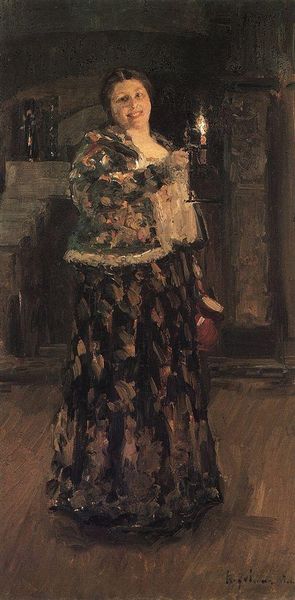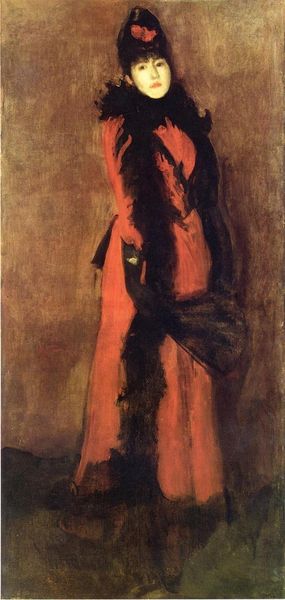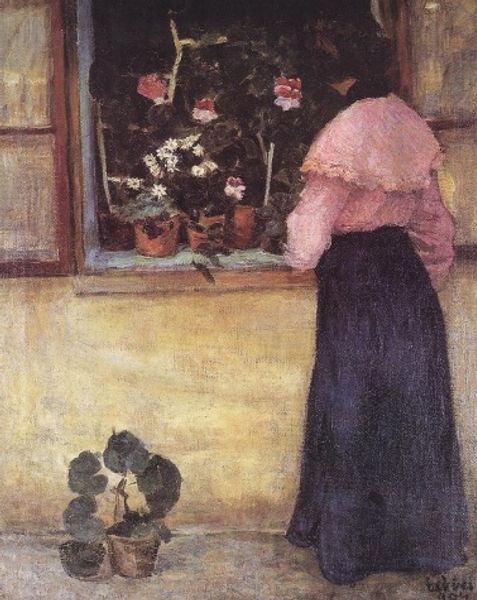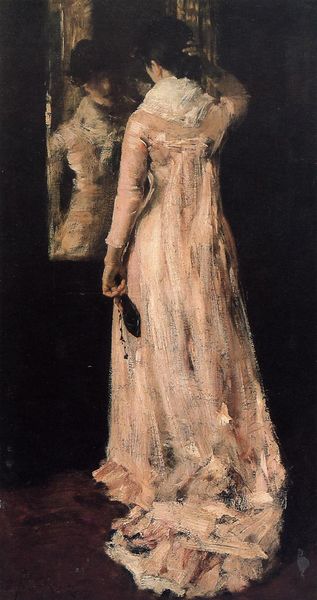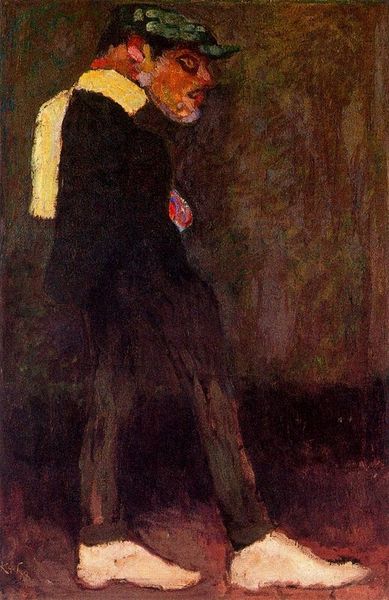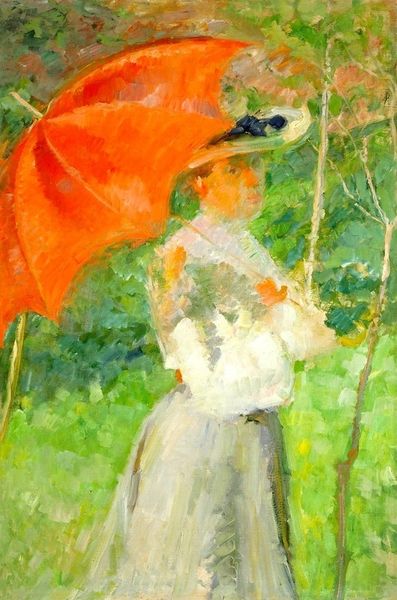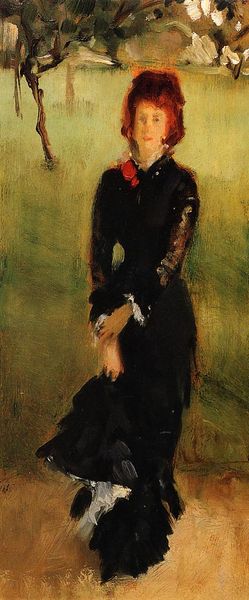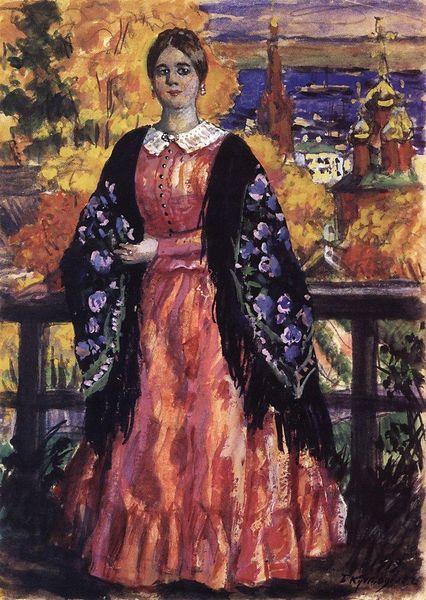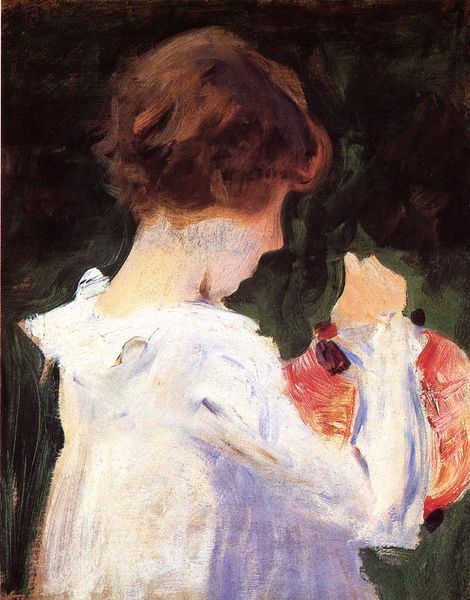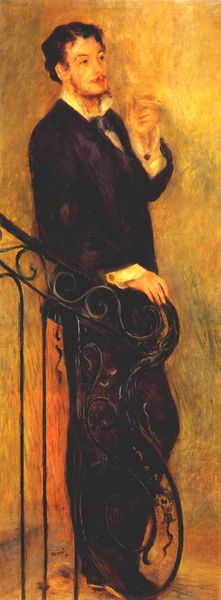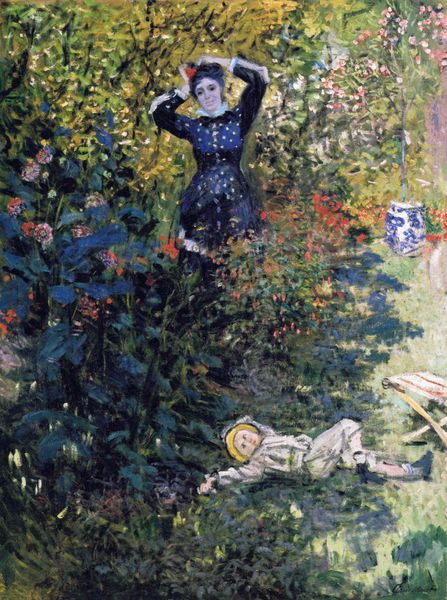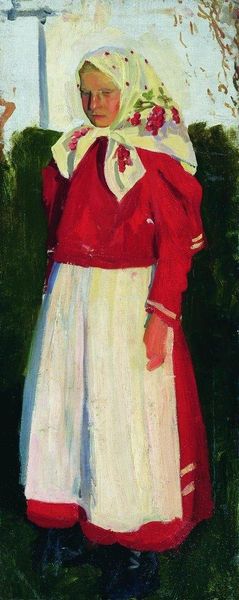
Copyright: Public domain
Curator: Here we have Konstantin Korovin's "Paper Lanterns," painted in 1898. The work finds its home here in the Tretyakov Gallery in Moscow. Editor: The overall effect is dazzling; the colors seem to shimmer, almost like captured sunlight. There is an ethereal mood here. Curator: Indeed. Korovin, a key figure in the Russian Avant-Garde movement, here, departs from traditional portraiture by infusing a sense of genre, really capturing a fleeting moment in time. He situates the model outdoors amidst the lanterns, and, through his depiction, allows viewers to consider her potential class status in relation to such leisure activities, or ponder possible intersections between personal identity and social role. Editor: Notice how the light isn't realistically motivated, though. The brightest illumination emanates not from a single source but scatters across the canvas, drawing our eye in equal measure to the figure's radiant dress and face, the saturated colors on the lanterns themselves, and, even further afield, to the abstracted shapes found amidst verdant green thickets in the distance. This diffusion lends a particular sensation of dynamism to the entire composition. Curator: Absolutely. He really seemed to play with conventions to show how they reinforced power structures. For example, how does this departure from traditional portraiture challenge pre-existing notions about portraiture? And whose stories were omitted by adherence to convention? Editor: His brushwork, itself, emphasizes an experience that is about immediacy over perfect mimicry. Observe the distinct daubs and flicks of oil-paint, seemingly laid down without any concern for detail, that work together synergistically, culminating in recognizable forms, and, thus, revealing themselves—primarily through careful looking—as much more than just an aggregate of raw material. Curator: Yes, and I find myself thinking, too, about the woman’s place in this landscape and in society at large, what we know of late nineteenth-century societal gender constraints, and how this piece prompts discussions of empowerment within oppressive societal constructs. Editor: The painting has really made me reflect on the importance of perception—the way that visual elements come together, and that culminate into meaning far exceeding what exists there at surface level. Curator: For me, reflecting on those power dynamics and societal relationships truly unlocks this artwork's long lasting impact in the discourse surrounding intersectionality and Russian identity.
Comments
No comments
Be the first to comment and join the conversation on the ultimate creative platform.
